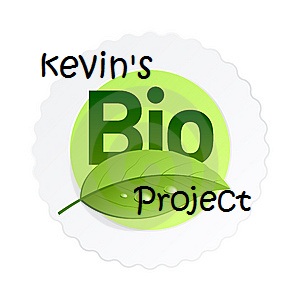Protists:
The kingdom Protist is a group with large biodiversity that may include more than 200 000 species. Biologists have argued for years the best way to classify protists. They are defined less by what they are and more by what they are not: A protist is a eukaryote organism that does not belong to the kingdoms a Plantae, Animalia, or Fungi. Although most protists are unicellular, quite a few are not. Some protists actually consist of hundreds or even thousands of cells but are still considered protists because they are very similar to other that are truly unicellular.
Protist comes from the word “protista” that comes from the Greek, which actually means “the very first. The first eukaryotic organism on earth, which appeared nearly 1.5 billion years ago, were protists. There are two major groups of Protists: Animal-like Protists (protozoans), the Plant-like Protists (unicellular algae) and the Fungus-like Protists.
Animal-like Protists:
Like animal this organism are heterotrophs, meaning that they absorb energy from a different organism. Animal-like protists can easily be distinguished by the way the move, there are the Zooflagellates, Sarcodines, Ciliates and Sporozoans.
Zooflagellates are those organism that swim using flagellas, whip-like things that allow a cell to move. Most of these organisms have either one or two flagellas, although a few species have many. Many live in lakes and streams, places where they can absorb nutrients from decaying organic material. On the other hand, others live inside larger organism, taking advantage of the food that they provide. Most zooflagellates reproduce asexually by the process of cell division, which results in two genetically identical cells.
Sarcodines move using a very unusual method which is projection of cytoplasm, also known as pseudopods. Sarcodines are animal-like organisms that use pseudopods for feeding and movement. These organisms are able to capture and digest particles of food and even other cells. They do this by surrounding their meal, and then take it inside themselves to form a food vacuole.
Members of the phylum Ciliophora, known as ciliates, use cilia for feeding and movement. Cilia is a hair-like thing similar to a flagella. The internal structure of cilia and flagella are exactly identical. Ciliates are found in aquatic environments, both fresh and salty. Under most conditions, ciliates reproduce asexually by mitosis.
Many animal-like protists live as parasites of animals. They do not move at all. Under the the right conditions, a sporozoite can attach itself to a host cell, penetrate it, and then live whitin it as a parasite.
Plant-like Protists:
These unicellular organisms contain a green pigment called chlorophyll, and they also are able to do photosynthesis. There are four phyla of plant-like protists: euglenophytes, dinoflagellates, chrysophytes and diatoms.
Euglenophytes are organisms that have two flagella but no well wall. They are very similar to zooflagellates, but they produce chloroplasts. Euglenophytes inhabit places like ponds and lakes, and if they can’t find sunlight to do photosynthesis they can also live as heterotrophs. Euglenas reproduce asexually by the process of binary fission.
Dinoflagellates are divided into the autotrophs and the heterotrophs. These organisms generally have two flagellates and a thick wall of cellulose that protects the cell. Like euglenophytes, these organisms reproduce asexually by the process of binary fission.
Chrysophytes are a diverse group of protists that have gold-colored chloroplast. The cell wall of some of them contains pectin rather than cellulose, while other contain both. Chrysophytes generally store food in the form of oil. They reproduce both sexually and asexually.
Diatoms produce thin, delicate cell walls rich in silicon. These walls are shaped like two piece of petri dish or flat pillbox, with one side fitted into the other. The cell walls have fine lines and patterns that almost seem to be carved into their glass-like brilliance.

Fungus-like Protists:
Fungus-like Protists grow in damp, nutrient-rich environments and absorb food through their cell membrane, just like fungi. Like fungi, these organisms are heterotrophs that absorb nutrients from dead or decaying organisms. Unlike true fungi, fungus-like protists have centrioles and don’t have chitin in their cell walls like fungi. The fungus-like protists includes the cellular slime molds, the acellular slime molds, and the water molds.
Cellular Slime Molds spend most of their live as free-living organisms. They live in nutrients-rich soils so they can reproduce easily. When they don't have any food supplies, they send out chemical signal that attract other organisms. After a few days all the organisms join together in one huge colony that starts functioning as a single organism.
Like cellular slime molds, acellular slime molds begin their life cycle as amoeba-like organism. When they join together, their cells mutate to produce structures with many nucleuses. These are actually one single structure with many nuclei, and it’s called Plasmodia. After a while small fruiting bodies spring up from the plasmodium, the sporinga produces haploid spores that they use to reproduce.
Water molds live in dead or decaying organism in water. They can also live in land as plant parasites. Unlike true fungi, water molds have cell walls made of cellulose and produce motile spores. Water molds have both sexual and asexual phase in their life cycle.



No comments:
Post a Comment